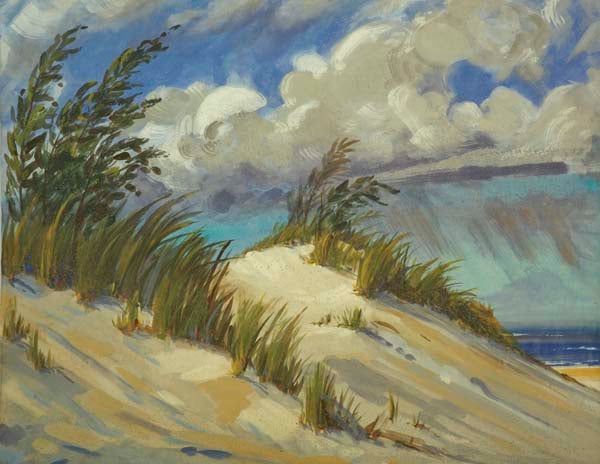One of the key components needed in order to paint theatrical scenery is - SCENIC PAINT. With today's ever shrinking budgets - it gets harder and harder to justify (to others and maybe even to yourself) why you should spend the extra money on theatrical scenic paint.
There are many reasons why it is more beneficial to use specially formulated scenic paint:
-Flexible binder that was designed for application to fabric backdrops.
-Matte finish that doesn't look glossy and 'fake' by reflecting stage lights.
-Heavy amounts of artist pigments that allow you to extend the paint with water (so one gallon actually equals two!)
Those are some of those reasons, but in order to create large scale art that needs to work with changing lighting cues in order to convey mood and time & place on stage - the most significant factor for choosing theatrical scenic paint is the actual pigments in the paint.
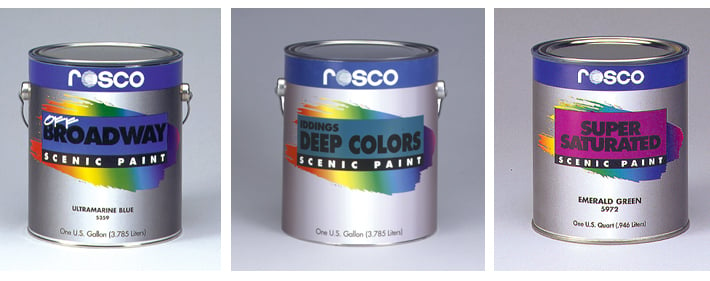 Rosco's three lines of Theatrical Scenic Paint: Off Broadway, Idding Deep Colors and Super-Saturated
Rosco's three lines of Theatrical Scenic Paint: Off Broadway, Idding Deep Colors and Super-Saturated
All three lines of Rosco Scenic Paint - Off Broadway, Iddings and Super Saturated - all use single-source, artist-grade, dry pigments to create their color not liquid color dispersions like you find in the tint machine at your local paint store. What this means is that instead of mixing multiple colors together to achieve a single color (squirt of red here - squirt of yellow there), we use one or two pure, artist pigments. That becomes important for two reasons: #1 mixing - if you mix a Rosco Red with a Rosco Blue - you'll get purple. If you mix paint store red with paint store blue, you'll actually end up mixing a bunch of colors together and end up with a muddy grayish color - not purple.
The second reason involves stage lighting. If your green paint is made up of several different color dispersions, both the scenic and lighting designer might end up with a surprise on day-one of tech rehearsal when the stage lights hit the foliage area of the backdrop for the first time. However, if the green paint is only made with green pigments the lighting designer (who was counting on the foliage being green when the light plot was conceived) will have predictable results come tech-week.
If the colors of the paint are pure, then a lighting designer can more effectively affect mood and time of day by using Roscolux color filters. Below are a series of images featuring a beach drop painted by Rosco's Paint Product Manager Jenny Knott. Note how, thanks to using proper painting technique and Rosco scenic paint, the tone of the drop can be affected by changing the colors of the gel on the drop.
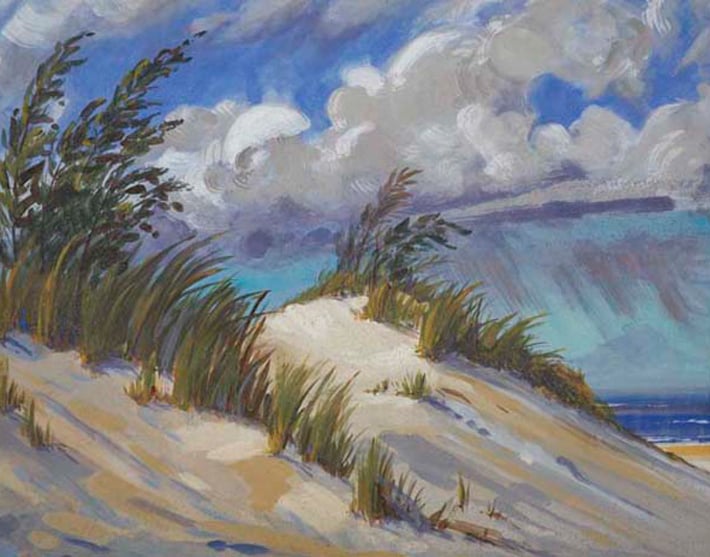 Original Beach Image
Original Beach Image
Here is the original beach image Jenny painted, lit under normal 'white' conditions. The scene has yellows in the sand & grass, blues in the sky & water and greens in the grass & leaves - all areas a lighting designer can accentuate using colored stage lighting.
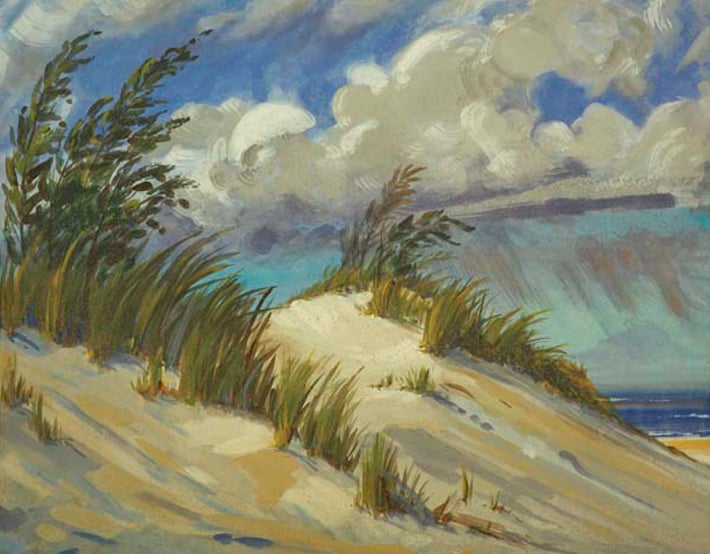 Beach lit with Roscolux #87 & #312
Beach lit with Roscolux #87 & #312
Here is the same image lit with Roscolux #312 Canary and #87 Pale Yellow Green. Note how using the gels has now turned the image lighter and conveys the essence of the beach during summer. Note how warm the sand looks and the yellow highlights that 'pop' in the grass.
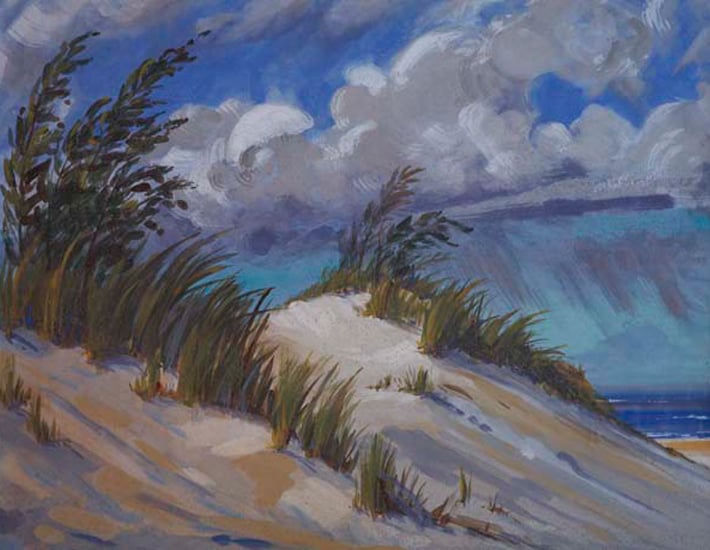 Beach lit with Roscolux #99 & #65
Beach lit with Roscolux #99 & #65
Same image now lit with Roscolux #99 Chocolate and #65 Daylight Blue, darkens the image and makes it feel like the weather has turned colder - the darkening of the sky and clouds makes me feel that perhaps a storm is coming.
This kind of subtle control in your scenery can be achieved with scenic paint - but cannot be guaranteed using paint that's pre-mixed with multiple color dispersions at a paint store.
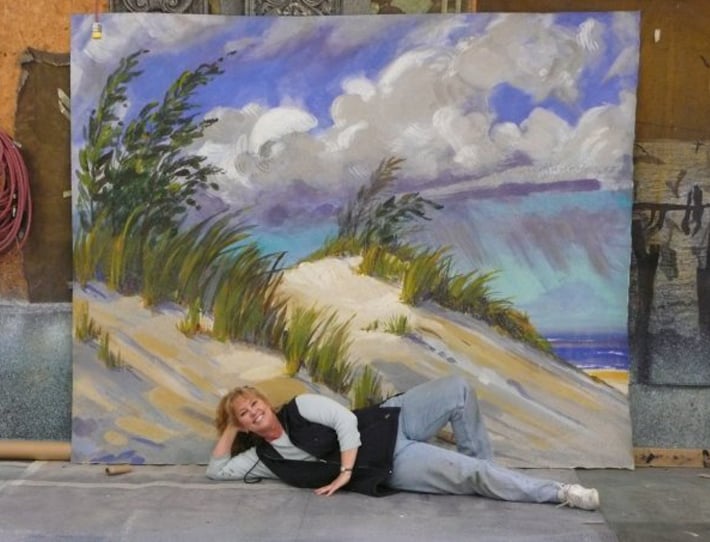 Rosco Paint Product Manager Jenny Knott posing on her beach.
Rosco Paint Product Manager Jenny Knott posing on her beach.
For advice on how to use Rosco Scenic Paints to create Scenic Textures - please download our Guide to Scenic Finishes Brochure
For advice on choosing the proper gel for creating the proper mood or time of day – please download our Guide to Color Filters Brochure
Save

